Results reinforce previous research that has found positive relationships between management interventions and stock recovery
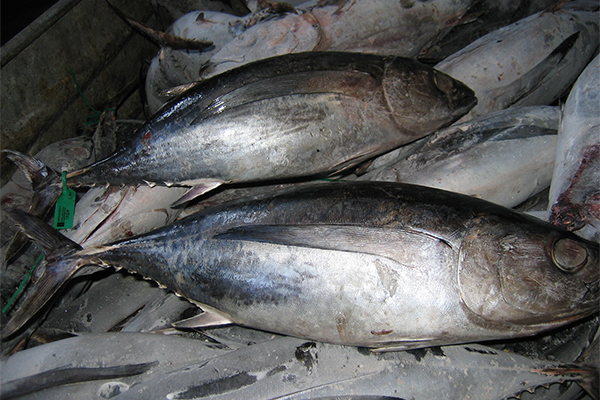
Effective fisheries management interventions have the potential to increase fisheries resilience and generate high profits and yields. Over the past 15 years, many developed nations have improved the health of fisheries within their exclusive economic zone (EEZ) through effective management. Management is often more challenging for fisheries that move between or beyond EEZs.
High seas fisheries – those that occur beyond EEZs – are open access to all nations and are therefore prone to common-pool resource problems, where competitive incentives can result in overfishing. Encouraging cooperation among fishing nations is key to preventing overfishing in the high seas, and multilateral institutions have been formed among fishing nations to foster cooperation.
While there is reported evidence that prescriptive management interventions reduce fishing mortality and allow depleted stocks to recover, interventions are often endogenous to stock status. In particular, management interventions are often applied only to stocks that are depleted (self-selection bias), making it difficult to estimate a causal effect and understand the magnitude of the effect.
Total allowable catch restrictions (hereafter referred to as catch quotas) play an important role in maintaining healthy fish stocks. While studies have identified a positive relationship between catch quota implementation and improved stock status, these methods are subject to selection bias as catch quotas are typically applied to stocks that are depleted.
This article – summarized from the original publication (Lawson, J.M. and C.M. Smith. 2023. A synthetic control approach to estimate the effect of total allowable catches in the high seas. Fish and Fisheries 2023;00:1-17) – reports on a study to address this challenge using the synthetic control method, which estimates the causal effect of catch quotas on fishing mortality and biomass by predicting a synthetic counterfactual outcome. The study focused on high-seas stocks (tunas, billfishes, and sharks) managed by tuna Regional Fisheries Management Organizations (tRFMOs). For information on the study setup, data sources and analyses, refer to the original publication.
Results and discussion
We find that the implementation of catch quotas in the high seas has more than doubled over the past decade, and that while the effectiveness of these quotas is heterogeneous, catch quotas have successfully reduced fishing mortality for some stocks. While catch quotas were once a management tool unique to the International Commission for the Conservation of Atlantic Tunas (ICCAT), there are now 18 catch quotas in place and this tool is now used by all five major tRFMOs.

For three treated stocks (North and South Atlantic Albacore and North Atlantic Swordfish) that were either fully fished or experiencing low levels of overfishing at the time of implementation, catch quotas reduce overfishing relative to the predicted synthetic control.
However, for two treated stocks (Eastern Atlantic Bluefin and Atlantic Bigeye) that were experiencing high levels of overfishing at the time of quota implementation, we find that catch quotas worsen the status of the stock relative to the predicted synthetic control. Furthermore, catches for the most heavily overfished treated stock, Eastern Atlantic Bluefin, exceeded annual catch quotas for roughly a decade after implementation.
Our analysis is limited in its scope, which makes it challenging to draw conclusions across all tRFMOs. By necessity, we focus on quotas implemented under ICCAT, a body that favored catch quotas as the primary harvest control tool at the time.
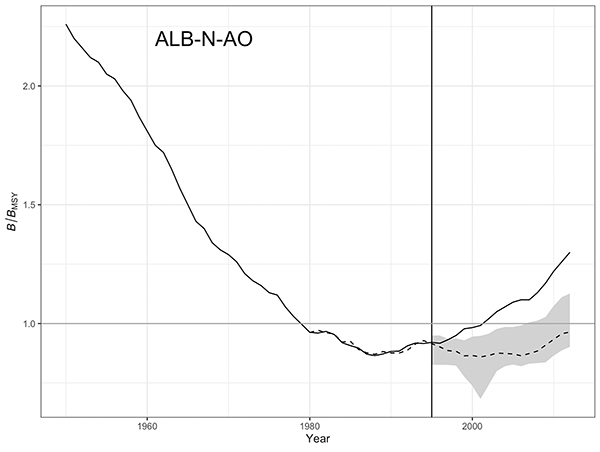
We find no evidence that the initial intention of a catch quota – whether to constrain or maintain fishing pressure – predicts the magnitude of the difference between the quota-managed stock and the synthetic non-quota stock. However, we do find that the extent of depletion at the time of implementation may contribute to quota effectiveness (effectiveness defined as quota-managed stocks having a lower fishing mortality that produces Maximum Sustainable Yield (F/FMSY) than synthetic non-quota stocks).
Overall, our findings are consistent with the economic theory that predicts depleted stocks are more likely to receive quotas. In general, the stocks for which catch quotas worsen the status of the stock relative to the predicted synthetic control are typically experiencing heavier overfishing at the time of implementation. These results suggest that it may be challenging to decrease fishing mortality if fishing pressure is very high at the time of quota implementation.
Once a catch quota is implemented, we find that total reported catch is typically within annual quotas, however clear evidence of non-compliance can make it challenging to assess the effectiveness of a quota. Such is the case with Eastern Atlantic Bluefin, where despite the implementation of the catch quota in 1999, illegal and unreported catch continued unabated and total catch continued to increase. It was not until over a decade later, in 2010, when fear of stock collapse had intensified, that the quota was set in alignment with scientific recommendations for the first time and enforcement tools such as sanctions were developed.
Our results show two types of anticipation: a ramping up of fishing mortality (an anticipatory race-for-fish) and a decrease in fishing mortality (anticipatory compliance) prior to catch quota implementation. Additional study is warranted to determine if quotas are implemented in response to a ramping up of fishing mortality, or if the ramping up of fishing mortality is in anticipation of quota implementation. However, preemptive behavior in response to an anticipated fisheries management intervention has been documented in other contexts.
Following the announcement of a large-scale no-take marine reserve in the Pacific, fishing activity increased by 130 percent roughly one year prior to implementation within the forthcoming marine reserve. To our knowledge, anticipatory compliance, or a decrease in fishing pressure prior to implementation has not been documented ahead of a fisheries management intervention. However, this phenomenon has been documented in other international agreements, such as the International Monetary Fund’s Article VIII Commitment, where countries complied with certain account restrictions four years prior to formally signing the agreement.
Fisheries in Focus: Marine protected areas don’t help tuna population, new paper shows
Our results bolster previous research that has found positive relationships between management interventions and stock recovery, yet these studies have been unable to make causal claims because of limitations in research design. Random forests have been used in previous studies examining the importance of various management measures on stock status. This approach uses regression trees to identify covariates (fisheries and life history characteristics, as well as management measures) that have a strong influence on a numerical response variable.
Overall, there has been growing recognition in fisheries science that methods allowing scientists to make causal claims are critical in advancing fisheries management. We were unable to predict credible biomass synthetic controls, with the exception of North Atlantic albacore; and while we were able to predict fishing mortality synthetic controls for most stocks, these results may be subject to bias from biological or modeling constraints. Management measures directly affect fishing mortality and indirectly affect stock biomass.
This suggests that a lagged response in stock biomass is expected following the implementation of catch quotas. It also may explain why we were only able to predict one credible and robust biomass ratio synthetic control (North Atlantic Albacore) out of our seven treated stocks. The limited ability of our synthetic control approach to finding suitable donor units for biomass could be improved by including features or covariates that may help improve pre-treatment fit.
Perspectives
We encourage researchers evaluating the effectiveness of fisheries management interventions to consider synthetic control methods, given recent advances in methodology and suitability for small sample size comparative case studies where randomization is absent.
Synthetic control methods are widely used in economics and political science to estimate the effect of various policies, ranging from the effects of right-to-carry laws to Brexit. Increasingly, synthetic controls are used to estimate the effects of different conservation interventions, such as reducing emissions from deforestation and degradation policy mechanisms and other deforestation policies.
Our study is limited in scope: examining seven catch quotas in place prior to 2012, implemented by only a single tRFMO. As longer time series become available, future research can extend our analysis and examine the effectiveness of these interventions across all tRFMOs.
Now that you've reached the end of the article ...
… please consider supporting GSA’s mission to advance responsible seafood practices through education, advocacy and third-party assurances. The Advocate aims to document the evolution of responsible seafood practices and share the expansive knowledge of our vast network of contributors.
By becoming a Global Seafood Alliance member, you’re ensuring that all of the pre-competitive work we do through member benefits, resources and events can continue. Individual membership costs just $50 a year.
Not a GSA member? Join us.
Authors
-
Julia Margaret Lawson
Corresponding author
Bren School of Environmental Science & Management, University of California, Santa Barbara, California, USA
-
Conner Muir Smith
Bren School of Environmental Science & Management, University of California, Santa Barbara, California, USA
Tagged With
Related Posts
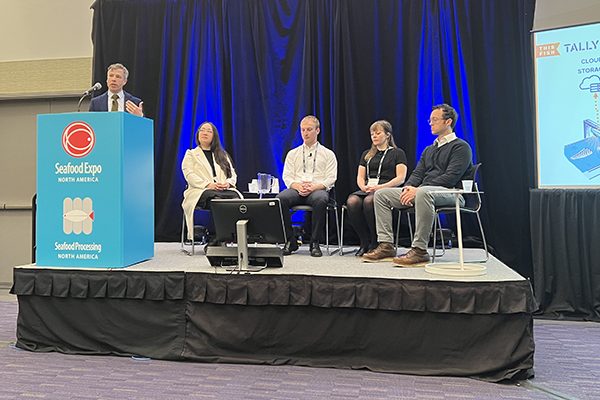
Intelligence
AI is becoming an ‘integral part’ of fisheries management and seafood processing
Artificial intelligence (AI) is playing a larger role in seafood, as data is at the heart of the so-called fourth industrial revolution.
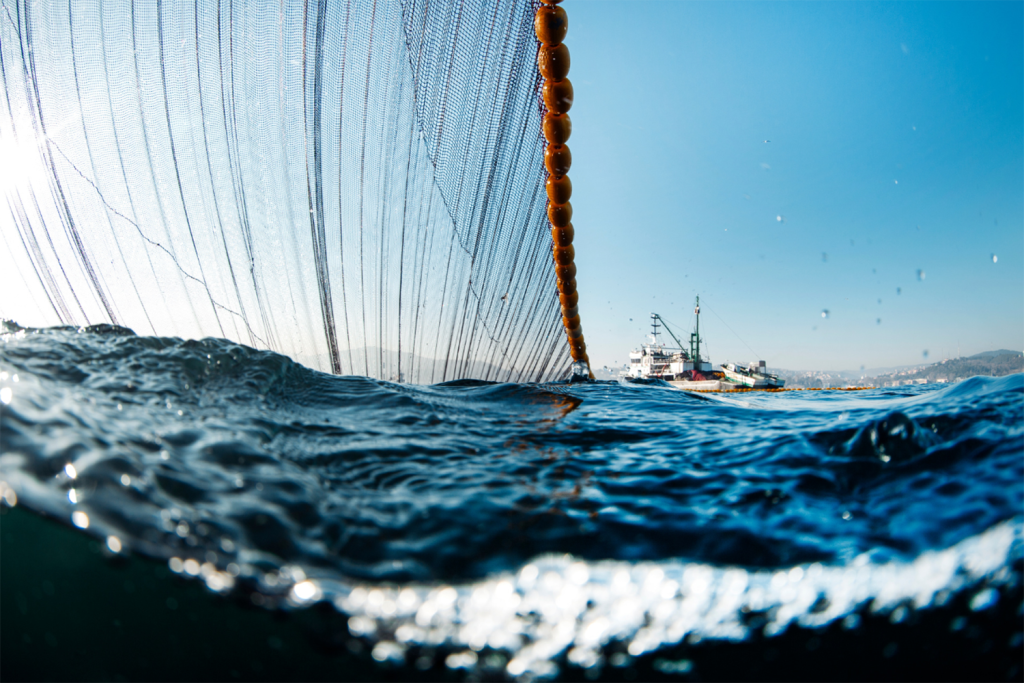
Fisheries
‘They need a good reason to stay’: How one coalition may break a decade of deadlock in the North Atlantic mackerel fishery
GOAL 2022: The North Atlantic Pelagic Advocacy Group, led by Dr. Tom Pickerell, is a finalist for GSA’s inaugural Global Fisheries Innovation Award.

Intelligence
‘Through science, there’s no question’: How evidence-based transparency is changing seafood traceability
ORIVO, a science-based testing and certification service for the global feed and supplement industry, aims to change seafood traceability.
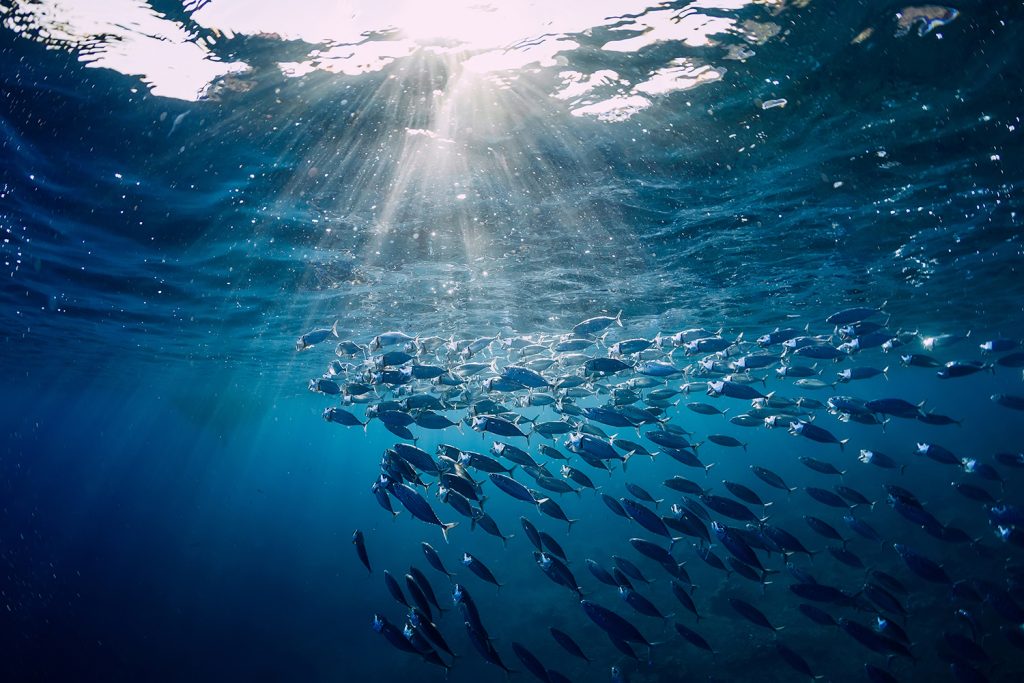
Fisheries
Fisheries in Focus: Tunas and billfishes are improving on the IUCN Red List – and it’s thanks to effective fisheries management
Sustainable Fisheries UW offers a rundown of the IUCN Red List and how tunas and billfishes benefit from strong fisheries management.



